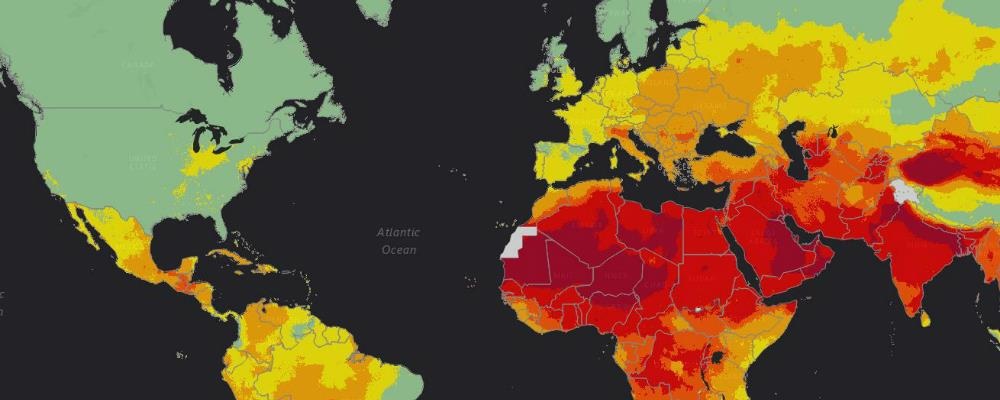
The World Health Organization (WHO) has developed global air quality guidelines based on decades of scientific research into the health impacts of air pollution. The latest update to these guidelines was published in 2021 and reflects accumulated scientific evidence on the adverse effects of air pollutants, even at low concentrations.
WHO guidelines serve as a reference for governments worldwide when developing national air quality standards and public health policies. They establish target concentration levels for major pollutants at which health risks are minimized.
Air pollution is one of the leading causes of premature mortality worldwide. According to WHO estimates, approximately 7 million people die prematurely each year due to exposure to polluted air. The main pollutants — fine particulate matter (PM2.5 and PM10), nitrogen dioxide (NO₂), sulfur dioxide (SO₂), and ozone (O₃) — penetrate deep into the respiratory tract and bloodstream, causing serious diseases.
WHO Air Quality Guidelines are based on a systematic review of thousands of scientific studies conducted worldwide. These studies examine the relationship between pollutant concentrations in the air and various health indicators, including mortality, morbidity, hospitalizations, and medical consultations.
The 2021 WHO guidelines became more stringent compared to previous versions (2005) because new scientific evidence showed that adverse effects of pollutants occur even at lower concentrations than previously thought. This means that there is no safe level of air pollution — any exceedance of recommended values carries health risks.
Key principles in developing guidelines:
WHO establishes Air Quality Guidelines (AQG) — recommended pollutant concentration levels at which health risks are minimal. Interim Targets (IT) are also defined for countries that cannot yet achieve the main guidelines — these are phased steps toward improving air quality.
Important: 24-hour average values in the table correspond to the 99th percentile, meaning that exceedances of these levels are permitted for no more than 3-4 days per year. Annual averages are calculated as the mean over the year.
| Pollutant | Averaging Period | WHO Guideline (AQG) | Interim Targets (IT) |
|---|---|---|---|
| PM2.5 (fine particulate matter) |
Annual average | 5 μg/m³ | IT-1: 35 μg/m³ IT-2: 25 μg/m³ IT-3: 15 μg/m³ IT-4: 10 μg/m³ |
| 24-hour average | 15 μg/m³ | IT-1: 75 μg/m³ IT-2: 50 μg/m³ IT-3: 37.5 μg/m³ IT-4: 25 μg/m³ |
|
| PM10 (coarse particulate matter) |
Annual average | 15 μg/m³ | IT-1: 70 μg/m³ IT-2: 50 μg/m³ IT-3: 30 μg/m³ IT-4: 20 μg/m³ |
| 24-hour average | 45 μg/m³ | IT-1: 150 μg/m³ IT-2: 100 μg/m³ IT-3: 75 μg/m³ IT-4: 50 μg/m³ |
|
| NO₂ (nitrogen dioxide) |
Annual average | 10 μg/m³ | IT-1: 40 μg/m³ IT-2: 30 μg/m³ IT-3: 20 μg/m³ |
| 24-hour average | 25 μg/m³ | IT-1: 120 μg/m³ IT-2: 50 μg/m³ |
|
| SO₂ (sulfur dioxide) |
24-hour average | 40 μg/m³ | IT-1: 125 μg/m³ |
| O₃ (ozone) |
Peak season (6-month average) | 60 μg/m³ | IT-1: 100 μg/m³ IT-2: 70 μg/m³ |
| 8-hour average (99th percentile) | 100 μg/m³ | IT-1: 160 μg/m³ | |
| CO (carbon monoxide) |
24-hour average | 4 mg/m³ | — |
Unfortunately, Armenia has not yet adopted standards for PM2.5 and PM10 — the most dangerous air pollutants. This means that there is no legislative control over the concentration of these particles in atmospheric air, despite the fact that they pose the greatest threat to public health.
For other pollutants, Armenia has the following standards (24-hour average MPC - Maximum Permissible Concentration):
The Armenia Blackouts project aims to fill this gap by providing real-time data on PM2.5 and PM10 concentrations based on readings from sensors installed by Yerevan Municipality and independent activists. We calculate the Air Quality Index (US AQI) and provide health protection recommendations.
Adopting national standards that comply with WHO guidelines is critically important for protecting the health of Armenia's residents and creating an effective air quality monitoring system.